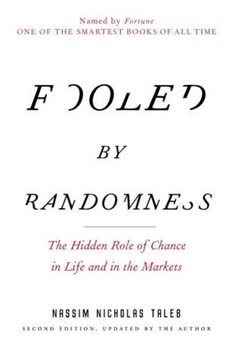Key Takeaways
1. Legal Analysis: A Toolkit for Clear Thinking
This book is a collection of tools for thinking about legal questions.
Beyond Rules. Legal education often focuses on memorizing rules, but the real power lies in understanding the underlying principles and analytical tools. These tools, drawn from economics, psychology, and jurisprudence, enable a deeper understanding of legal issues.
Thinking Like a Law Professor. The book aims to provide a user's guide to these essential tools, making them accessible to law students, lawyers, and anyone interested in the legal system. It emphasizes the importance of mastering these tools to analyze legal problems effectively.
Hidden Knowledge. Many valuable analytical tools are not taught systematically in law schools, becoming the property of an "inadvertent cognoscenti." This book seeks to correct this by presenting these tools in a clear and organized manner, with examples of how they can be applied across different areas of law.
2. Incentives: Shaping Behavior Through Legal Decisions
Instead of looking back and deciding who should bear the suffering, it can look ahead and decide what ruling will make the suffering less likely to occur later.
Ex Ante vs. Ex Post. Legal analysis can be approached from two perspectives: ex post (looking back at a past event to determine fault) and ex ante (looking forward to the future consequences of a decision). The ex ante perspective focuses on how legal rules affect people's incentives and behavior.
The Power of Incentives. Legal decisions create incentives that influence future behavior. By understanding these incentives, courts can make rulings that promote desirable outcomes and discourage undesirable ones.
Examples of Incentive-Based Reasoning:
- Denying compensation to bank tellers who hand over money to hostage-takers to avoid encouraging hostage-taking.
- Requiring buildings to be torn down when they encroach on neighboring property to incentivize careful construction.
- Protecting the confidentiality of therapist notes to encourage candid discussions.
3. Efficiency: Minimizing Waste and Maximizing Value
One thing the law tries to do—some think it’s the main thing the law tries to do—is keep the cost of such situations to a minimum.
The Goal of Efficiency. A key goal of the legal system is to minimize waste and maximize wealth by giving people incentives to avoid costly situations. This involves considering all costs, including the costs of preventing accidents and the costs of accidents themselves.
Cost-Justified Precautions. The law often requires individuals to take reasonable precautions to prevent harm, but not perfect precautions. The standard is whether the cost of the precaution is less than the expected cost of the accident it would prevent.
Property Rights and Contracts. Property rights and contracts are essential for promoting efficiency by giving people incentives to develop and use resources productively. They facilitate the transfer of resources to those who value them most.
4. Margins: Incremental Adjustments for Optimal Outcomes
If you want to understand the incentives that rules create, it’s important to grasp the meaning of margins because margins are where incentives take their bite.
Thinking at the Margin. Legal analysis should focus on incremental changes in behavior rather than all-or-nothing decisions. Incentives affect behavior at the margin, influencing choices about how much to do something or which activity to pursue.
Substitutions Between Margins. Legal rules can cause people to substitute one behavior for another. For example, restrictions on smoking in workplaces may lead people to smoke more at home.
Marginal Deterrence. Criminal penalties should be scaled to create incentives for criminals to avoid committing more serious crimes. This requires preserving marginal deterrence, ensuring that there is always a greater punishment for worse offenses.
5. The Single Owner: Aligning Interests for Efficiency
The useful thought experiment is to imagine that the ballpark and the neighboring houses had a single owner.
The Single Owner Hypothetical. A useful tool for analyzing legal problems is to imagine that all the interests at stake are owned by a single person. This helps to identify the most efficient outcome by eliminating conflicts of interest.
Internalizing Costs. The goal of many legal rules is to make people internalize the costs of their actions, so that they take those costs into account when making decisions. This can be achieved by holding people liable for the harm they cause.
Applications of the Single Owner Principle:
- Deciding whether to allow a neighbor to shoot an attacking ox depends on the relative values of the ox and the neighbor's goat.
- Determining whether a ship owner must pay for damage to a dock used during an emergency.
- Deciding what cargo to jettison from a sinking ship.
6. Least Cost Avoider: Assigning Responsibility for Efficiency
The important question is how the resolution of it will affect our behavior in the future—and the behavior of others like us.
The Least Cost Avoider Principle. Legal rules should assign responsibility for preventing harm to the party who can avoid it most cheaply. This encourages efficient behavior by giving the responsible party an incentive to minimize the total cost of accidents.
Strict Liability. Strict liability, where a party is liable for harm regardless of fault, is often imposed on those who are in the best position to control the risk of harm. Examples include blasting with dynamite and owning wild animals.
Joint Care. In situations where both parties can take precautions to prevent harm, the law may impose a duty of joint care, assigning liability based on comparative negligence.
7. Administrative Cost: Balancing Efficiency and Practicality
We have to think about how expensive the rule will be when courts, and the parties to lawsuits, try to apply it.
The Importance of Administrative Cost. When designing legal rules, it is important to consider the costs of administering and enforcing them. These costs include the time and resources required for litigation, as well as the potential for errors.
Trade-offs Between Efficiency and Administrative Cost. The most efficient legal rule may not always be the best one if it is too expensive or difficult to administer. Simpler rules, even if less precise, may be preferable in some cases.
Examples of Administrative Cost Considerations:
- Rules governing appeals
- Rules about ownership of wild animals
- Rules about the jurisdiction of a court
8. Rents: Identifying and Reducing Wasteful Competition
If, though the wood were their own, they still would find it compensated them to run trains at the cost of burning the wood, then they obviously ought to compensate the owner of such wood, not being themselves, if they burn it down in making their gains.
Rent Seeking Defined. Rent seeking refers to wasteful efforts to gain a prize or advantage, often through political means. It involves competition over the distribution of existing wealth rather than the creation of new wealth.
The Costs of Rent Seeking. Rent seeking can lead to a misallocation of resources, as individuals and firms spend time and money trying to gain an advantage rather than engaging in productive activities. It can also lead to corruption and inefficient outcomes.
Examples of Rent Seeking:
- Lobbying for government subsidies or tax breaks
- Competing for a monopoly license
- Engaging in costly litigation to gain a favorable legal ruling
9. Coase Theorem: Private Bargaining for Efficient Outcomes
If one of these expenses is the burning down of a wood of such value that the railway owners would not run the train and burn down the wood if it were their own, neither is it for the public benefit that they should if the wood is not their own.
The Coase Theorem. In a world with no transaction costs, the allocation of legal rights does not affect the efficiency of the outcome. Parties will bargain to reach the most efficient result, regardless of who initially holds the rights.
Transaction Costs. The Coase Theorem assumes that bargaining is costless. In reality, transaction costs (such as the costs of negotiation, information, and enforcement) can impede bargaining and prevent parties from reaching efficient outcomes.
Implications for Law. When transaction costs are high, the law should assign rights to the party who values them most. This minimizes the need for bargaining and promotes efficiency.
10. Agency Problems: Aligning Interests and Mitigating Risks
It’s not a question of what’s fair as we look back on the fateful day. It’s a question of making the right rule for the future.
The Principal-Agent Problem. Agency problems arise when one person (the agent) is supposed to act on behalf of another (the principal), but their interests are not perfectly aligned. The agent may have an incentive to shirk or act in his own self-interest.
Agency Costs. Agency costs are the expenses incurred in trying to align the interests of principals and agents. These costs include monitoring, bonding, and residual losses.
Legal Solutions to Agency Problems:
- Contracts that tie the agent's pay to the principal's success
- Monitoring and oversight mechanisms
- Legal duties of loyalty and care
11. Public Goods: Overcoming Free-Riding for Collective Benefit
If the cave (or the land, or bandwidth) isn’t owned by anyone, it probably won’t get developed to the full extent that it could be, and this would be yet another example of waste.
Public Goods Defined. Public goods are non-excludable (everyone can enjoy them) and non-rivalrous (one person's enjoyment does not diminish another's). Examples include clean air, national defense, and public parks.
The Free-Rider Problem. Public goods are prone to free-riding, where individuals benefit from the good without contributing to its cost. This can lead to under-provision of the good.
Legal Solutions to Public Goods Problems:
- Taxation to fund public goods
- Government regulation to mandate contributions
- Intellectual property laws to create exclusive rights
12. Games: Understanding Strategic Interactions
The problem is that each of us gets all the benefits of overextraction but feels only a smaller share of the costs.
Game Theory. Game theory is a framework for analyzing strategic interactions between individuals or groups. It helps to understand how people make decisions when their outcomes depend on the choices of others.
Key Game Theory Concepts:
- Prisoner's Dilemma: A situation where individual rationality leads to a collectively suboptimal outcome.
- Stag Hunt: A situation where cooperation is the best outcome, but requires trust and coordination.
- Chicken: A situation where each player wants to avoid yielding, but a collision is the worst outcome.
Applications to Law. Game theory can be used to analyze a wide range of legal issues, including contract law, tort law, and criminal law. It provides insights into how legal rules can be designed to promote cooperation and avoid undesirable outcomes.
Last updated:
Review Summary
The Legal Analyst receives overwhelmingly positive reviews for its accessible approach to complex legal concepts. Readers praise its interdisciplinary perspective, incorporating economics, game theory, and psychology. Many find it valuable for law students and those interested in understanding legal reasoning. The book is lauded for its clear explanations, real-world examples, and thought-provoking content. Some reviewers note its relevance beyond law, applicable to policy-making and general analytical thinking. While a few mention occasional repetitiveness or density, most consider it an essential read for aspiring lawyers and curious minds alike.
Similar Books










Download PDF
Download EPUB
.epub digital book format is ideal for reading ebooks on phones, tablets, and e-readers.







